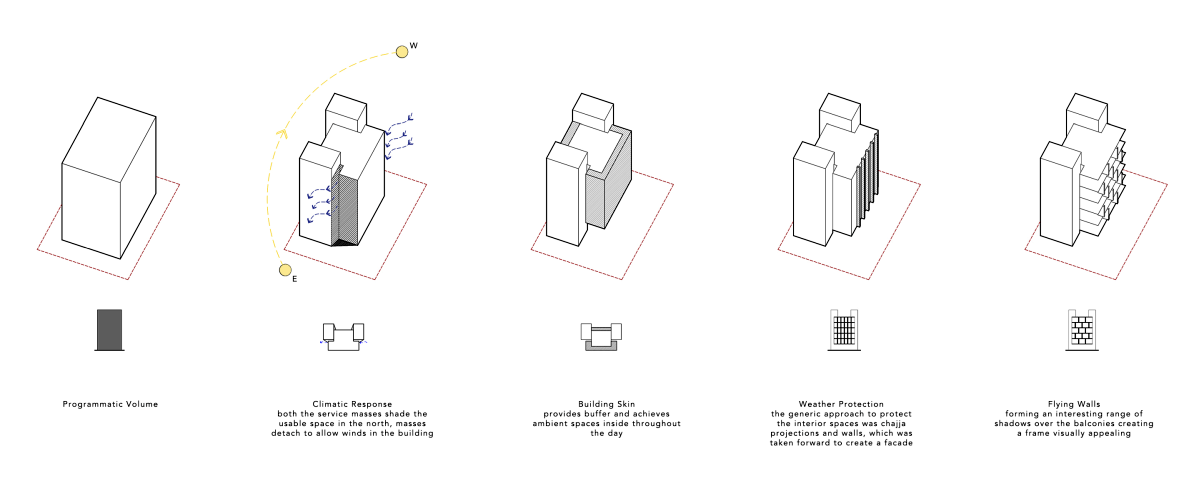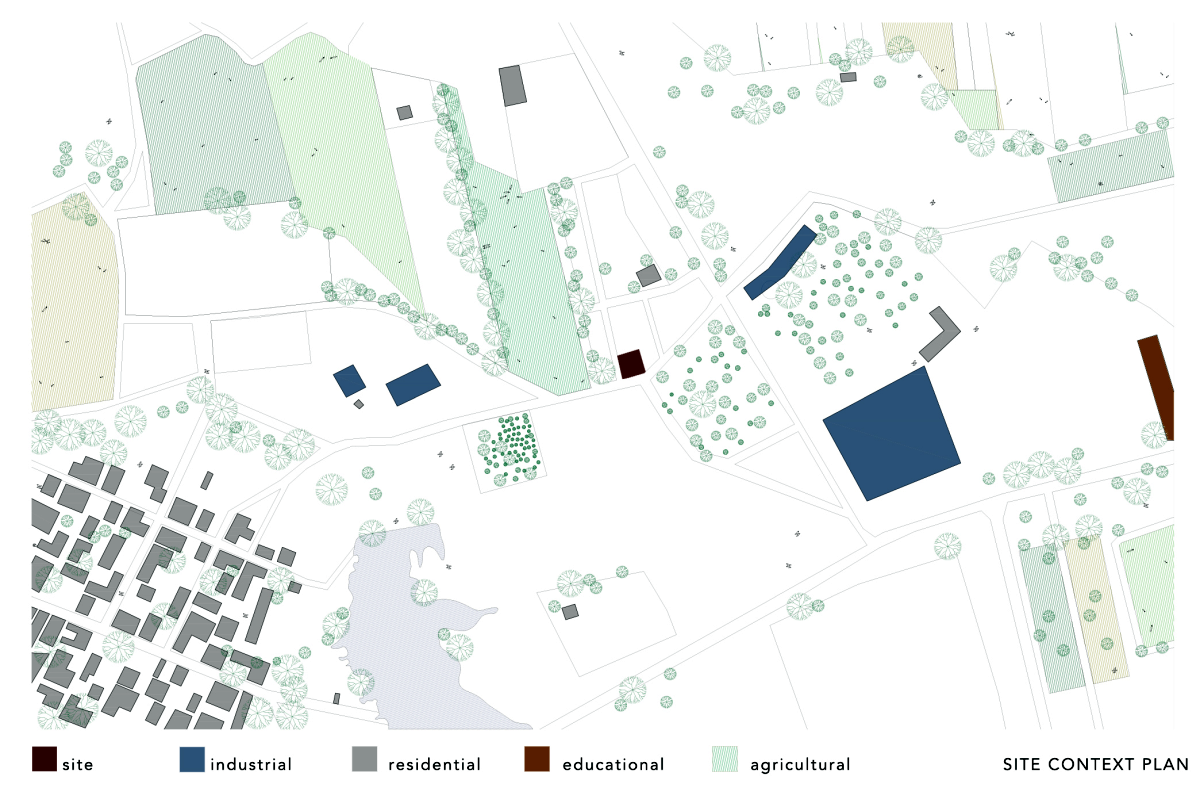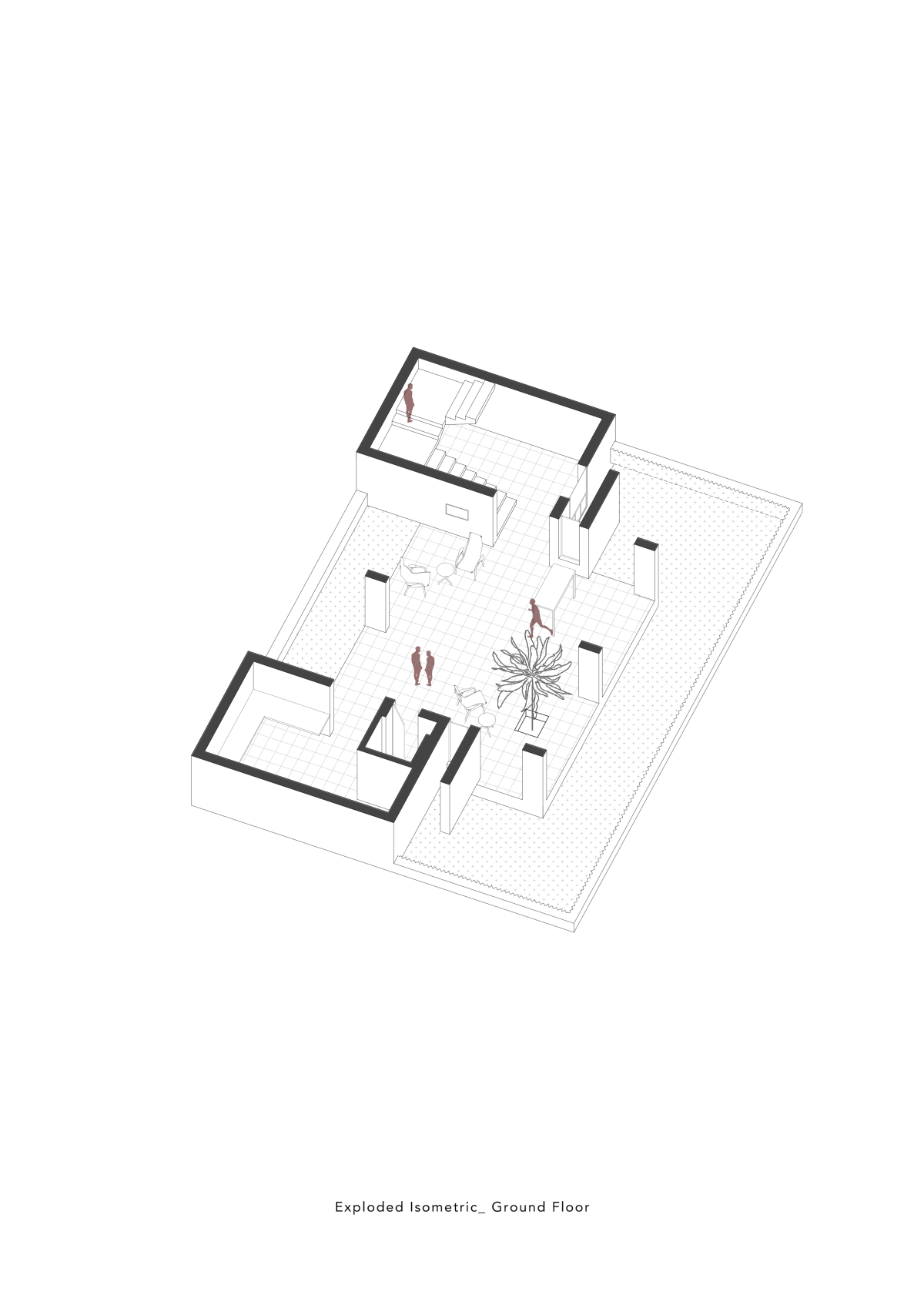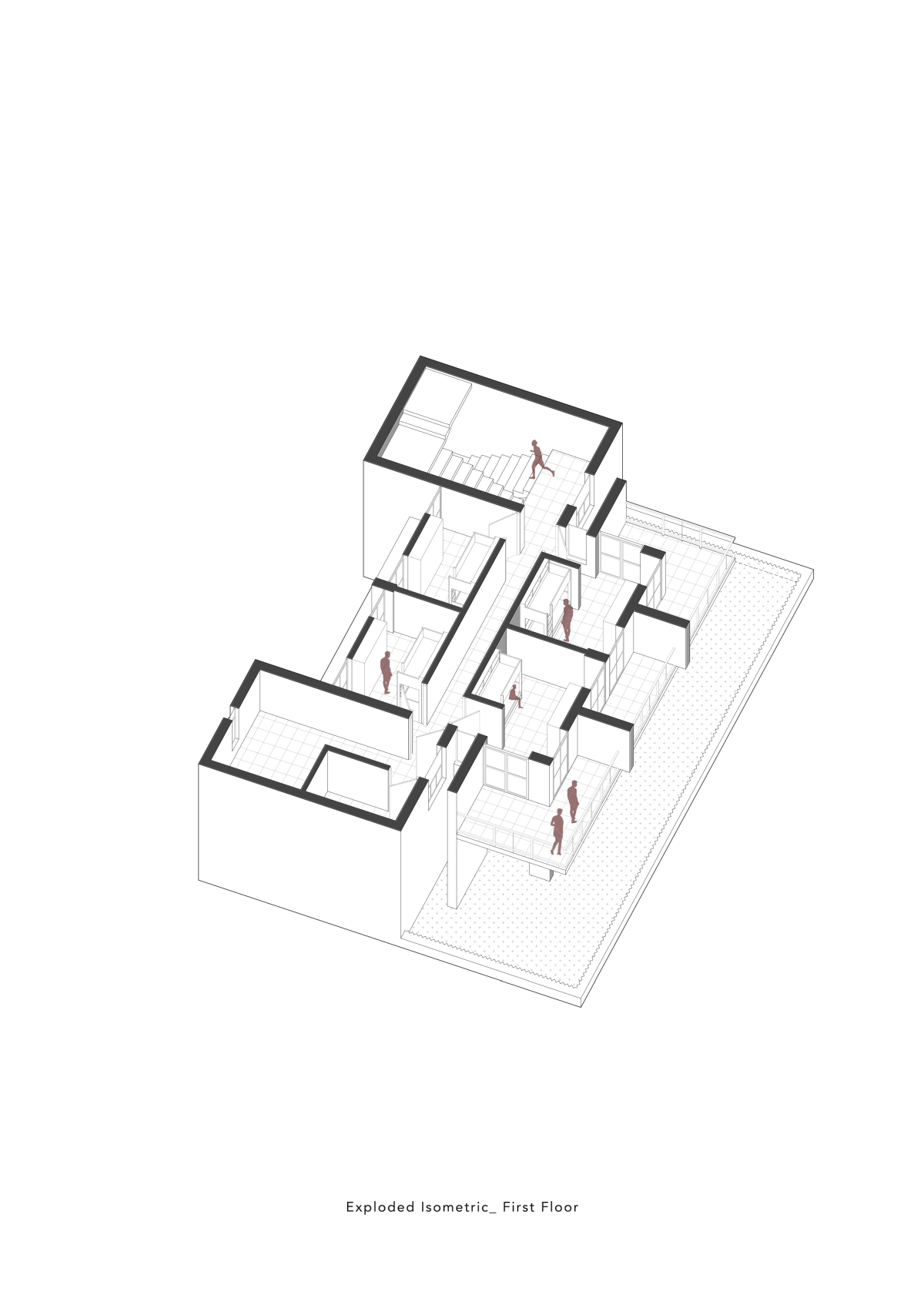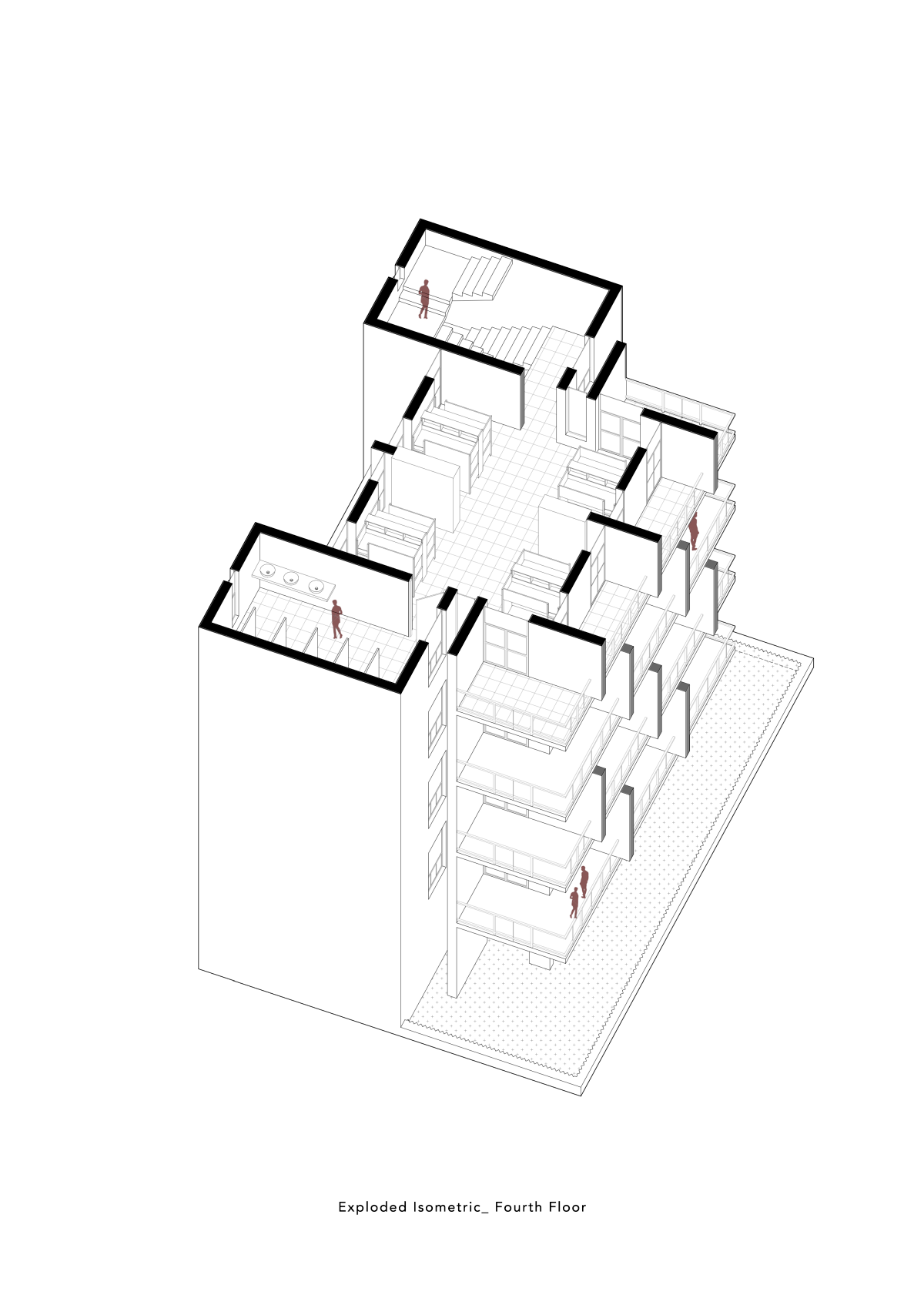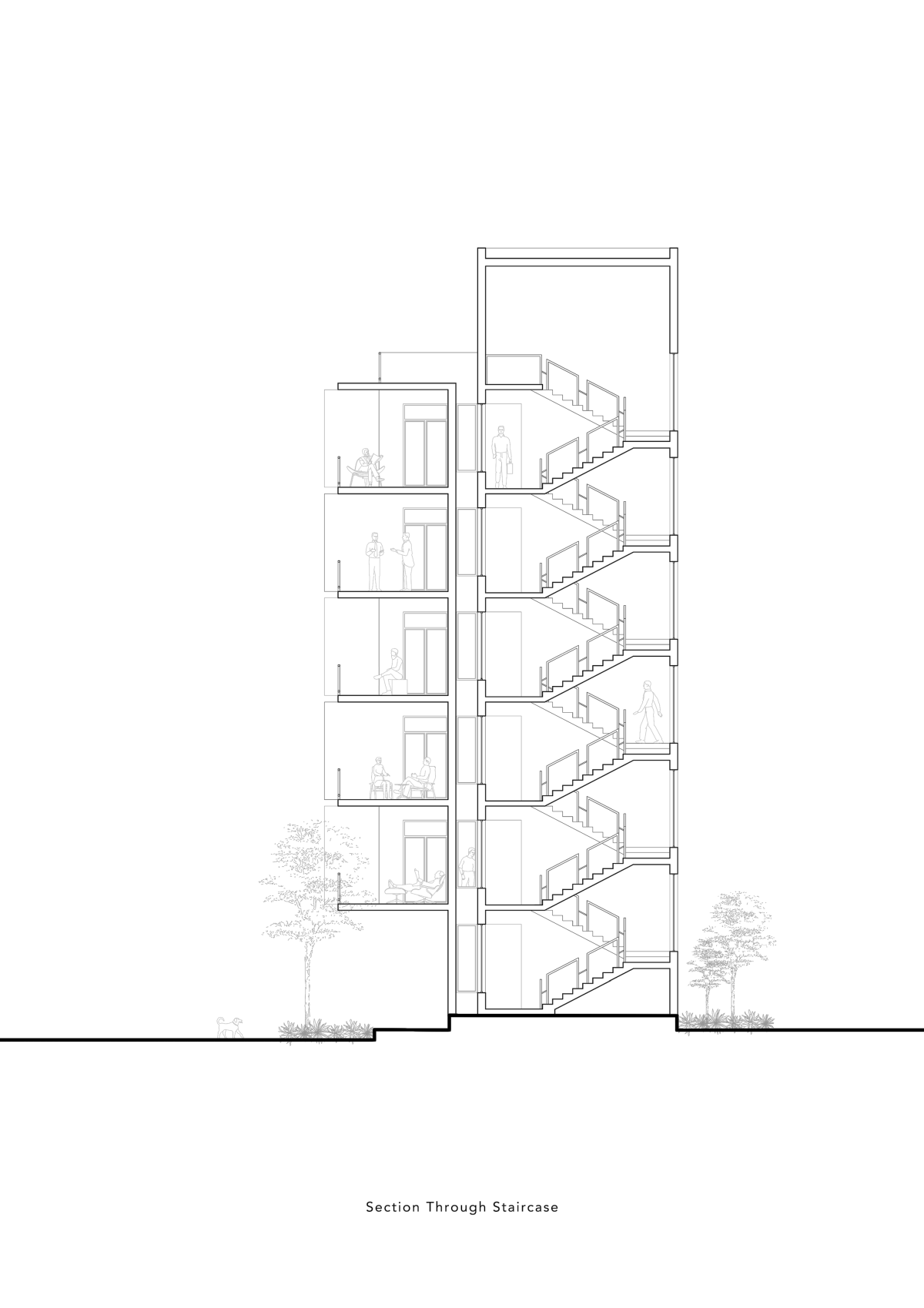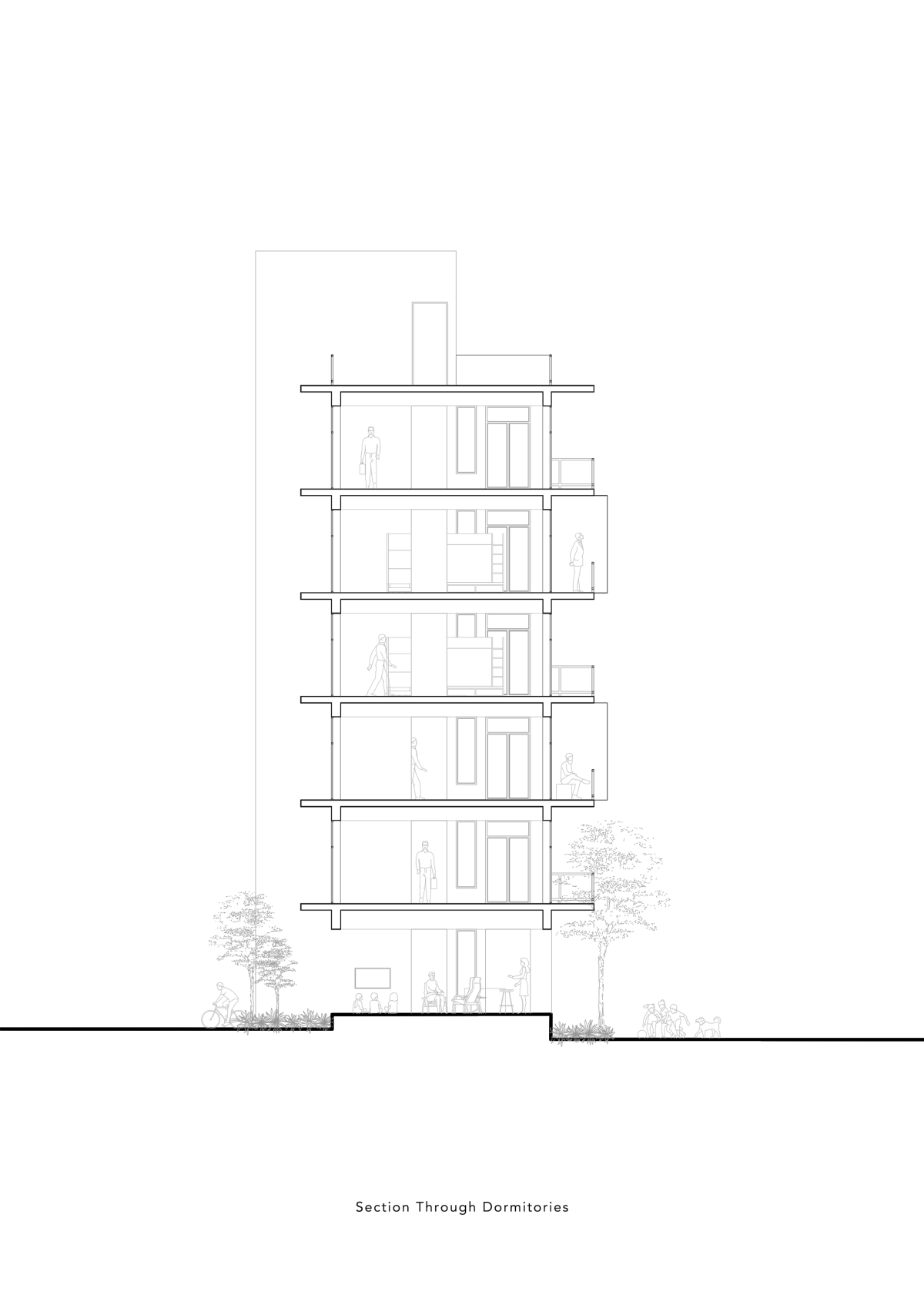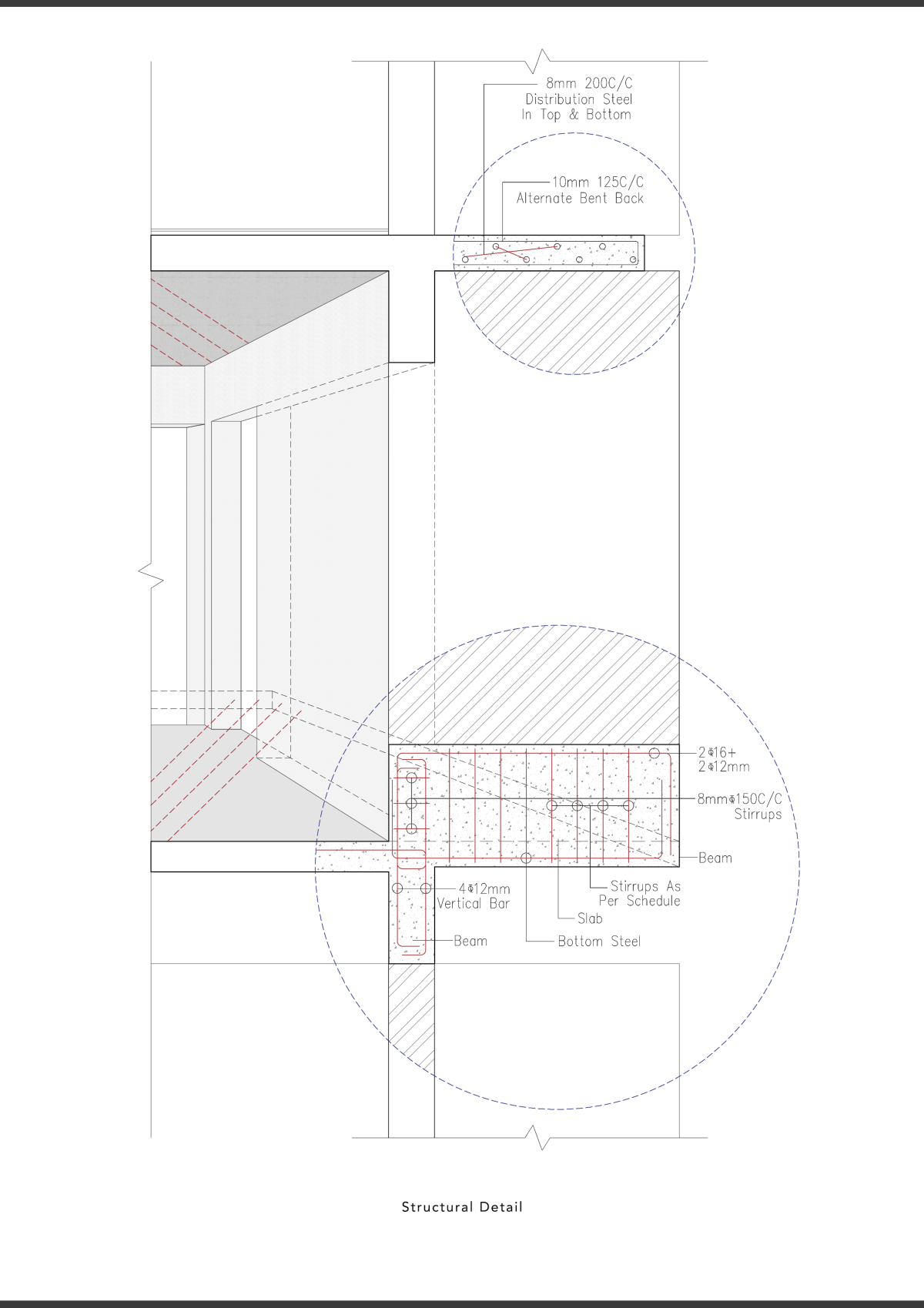The flying walls hostel project was commissioned to us by a company intending to provide their workers with a living space that promotes community living and wellbeing. The site is located on the outskirts of the city of Rajkot in a developing area with educational, industrial and hospitality buildings coming up. Despite the development, the site’s location provides unending views of the agricultural, grazing lands and the horizon.
The functional requirement was straightforward, the lower level of the building dedicated to the general managers and officials while the higher levels dedicated to other workers of different ranks. The company had 5 GMs and 50 – 75 other employees. The requirement divided the built mass into five equal levels with a simple floor plan and a site and services kind of approach. As the inhabitants hail from different parts of the country, a friendly and open environment in terms of built form was necessary to promote a healthy social bond amongst everyone.
The weather protection elements were primarily worked on to provide spaces that are ambient throughout the day. The heat from the sun after midday heats the building surfaces exposed to the west the most. To tackle this we staggeringly stacked the walls above cantilevered slabs to create the necessary barrier.
This process generated an idea to incorporate this in a way to form the building’s language. What if we could cantilever the walls out of its resting slabs? As if the walls were flying out from the facade and balancing over the central frame structure. These flying walls form an interesting range of shadows over the balconies creating a frame visually appealing. When pictured with the context a slight contrast is always maintained, neither overpowering nor merging to create the identity and incite a sense of pride and belonging in the occupants.
Drawings –
















